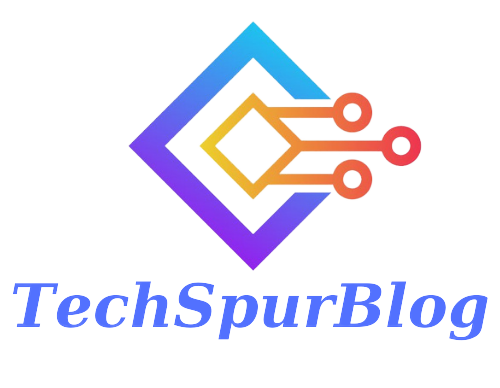Every data-driven business today looks for data and analytical techniques to help them make decisions more quickly and effectively. This is where data visualization and business intelligence are essential. Business intelligence, or BI for short, refers to the systems, applications, and techniques used to collect, integrate, analyze, and present corporate data.
However, the combination of data and images to help consumers understand complicated data more readily is called data visualization.
This comprehensive guide will assist businesses in employing Business Intelligence services and Data Visualization services for their endeavors.
Key Features of Business Intelligence
Data-Driven Decision-Making:
With the help of BI tools, data is collected from different sources, which are later turned into actionable reports. These reports help decision-makers make the right decisions based on the insights provided to them.
Improved Efficiency:
Ultimately, techniques such as analytics, process improvement, and obstacle identification are applied in the development of special operations. Therefore, BI services operations tend to be profit-generating.
Competitive Advantage:
A major advantage that BI brings in the context of business is having a leg up on the competition. This place gets simpler, where it is simpler to find the appropriate market by the mechanisms of the market, the consumer behavior, and the possibility of growth.
Predictive Analytics:
Business intelligence tools are equipped with predictive analytics, which allow businesses to stay on trend and avoid the pitfalls of a poorly executed strategy.
Customized Solutions:
BI experts shall conduct a business analysis of your company and prepare customized plans with the aim of helping you accomplish your goals and objectives.
Implementation and Integration:
These professionals are engaged in setting up BI tools and ensuring that existing systems are compatible with a smooth transition.
Training and Support:
BI consulting services include training classes to equip employees with the knowledge and skills to efficiently use BI systems, as well as providing support to address any future problems.
Also Read: Key Advantages & Limitations Of Employing Data Visualization
Key Features of Data Visualization
Enhanced Data Understanding:
Visual representations, such as charts, graphs, and dashboards, enable users to better see and analyze complex data.
Interactive Dashboards:
Modern data visualization systems are equipped with interactive dashboards that allow navigation of data, analysis of the details, and retrieval of useful information.
Identifying Patterns and Trends:
Data visualization tools streamline discovering the failures and outdated components of the data and, in turn, promote prompt decision-making.
Storytelling with Data:
Data visualization is a great tool for business communication. It is more persuasive, interactive, and efficient than simple reports or presentations.
Interactive Exploration:
Through the use of data visualization tools, the end user can interact with the information, such as zooming in/out, filtering, drilling down into the details, and changing parameters in a dynamic and real-time manner.
This uniqueness of interactive abilities helps users to unearth insights and solve ad-hoc problems at the same moment.
Real-time Data Visualization:
The data visualization system can use real-time data streaming to display the current update. Real-time capability is one of the essential features that can monitor live metrics, identify anomalies, and thus make timely decisions based on up-to-date information.
Effective Integration of BI and Data Visualization
Data Integration:
Business Intelligence tools merge data from different sources into one dataset, which is visualized with the help of data visualization solutions to obtain a comprehensive view of business activities.
Real-Time Insights:
Business Intelligence and data visualization together can be used to track real-time monitoring and reporting. They help respond to emerging market trends and changes rapidly.
Enhanced Partnerships:
Data-driven cultures are fostered via interactive dashboards and visualizations, which enable teams to collaborate through informed debates and decisions.
Standardized Data Sources:
The integration of BI and data visualization becomes a priority by combining data from multiple sources, including databases, cloud service providers, IoT gadgets, and third-party APIs, into a single interface.
By integrating various data sources into a single view, it becomes the information hub where companies can identify all aspects of their business operations and customers’ behaviors in a composite view.
Customizable Dashboards:
Personalized dashboards are created through effective integration, showing a mix of BI analytics and easily understood visual data.
Users can customize their dashboards and get the information that is present in the format they are looking for and is very important to their positions during the monitoring and review process.
Contextual Insights:
BI and data visualization offer interactivity with embedded visualizations in BI reports, dashboards, and analytical workflows to present contextual insights.
This setting helps improve data understanding, decision-making, and the drawing of insights by depicting relationships and associations.
Predictive Analytics Visualization:
By combining techniques of predictive modeling with business visualization tools, organizations can expressively visualize predictive forecasts, relationships, and scenarios.
Data visualization gives you the power to measure and predict trends for the future, identify the risks that may negatively affect your business, and change your strategies in accordance with future perspectives.
Drill-Down Capabilities:
This integration allows for drilling down to reveal underlying factors that have contributed to certain data points, and to identify finer details, magnitudes, and metrics. This facility brings you deeper into the analysis, pushing forward for decision-making.
Successful integration of BI and data visualization enables enterprises to take data utilization as a strategic application, promote data-driven decisions, and explore highly actionable data for a competitive advantage.
It allows for a continuous data ecosystem where analytics, graphs, and communications are integrated into one comprehensive platform to utilize the benefits of the available data.
Also Read: Understanding Business Intelligence: A Detailed Guide For Startups
Conclusion
Data management and representation are two tools that contribute to the practicality of data-oriented decision-making in any organization. Through BI consulting services and data visualization adoption, organizations will be able to apply data to make good decisions, improve performance, and accomplish more success.
Implementing these technologies is not just a trend but a strategic necessity for any business aiming to be successful with the rapid change of the data landscape.
After going through this guide, your business can easily go for these two along with data analytics services for further enhancement.

We are a team of enthusiastic people who want to share our experience, knowledge and enterprise with the world. We love what we do and we hope you will too!. We pride ourselves on being the global leader in developing Techspurblog as a technology blog, which can create original content.






